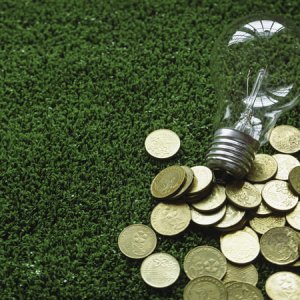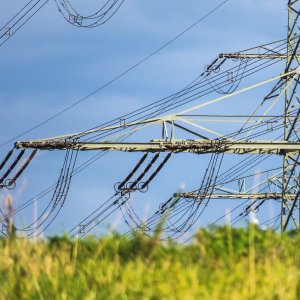
Global and Mexican Hydroelectricity Trends
The global hydropower sector has grown substantially in recent years, commissioning over 27GW in hydropower capacity during 2012. Its rise has in part been thanks to pro-renewable energy policies in place in the US and Japan and regional carbon trading schemes in Australia, China and Colombia. North and Central America still hold significant potential and there is a lot of opportunity to modernize existing facilities. Canada is one of the world’s leading hydropower generators and has the potential to double its more than 75GW of installed capacity. One of the industry’s main priorities is to address regulatory hurdles so that hydropower can be further developed in the region. Important projects that have recently been developed include La Yesca in Mexico, with a capacity of 750MW, and Reventazon in Costa Rica, with a capacity of 305.5MW. Panama is planning to increase its installed hydropower capacity by 720MW but currently lacks sufficient transmission systems, and also faces divided public opinion about some of its planned projects. Central American development is closely linked to the Central American Electrical Interconnection System (SIEPAC), which facilitates the exchange of power between six countries in the region: Guatemala, Honduras, El Salvador, Nicaragua, Costa Rica and Panama.
South America presents a differing scenario for renewable energy development; whereas some countries are taking committed steps towards developing the sector, others are still heavily reliant on fossil fuels. Countries such as Paraguay, Argentina and Chile intend to increase the proportion of hydropower in their energy mix, while other countries are already constructing or developing new facilities. The region’s hydropower leader is Brazil, with 23GW under construction or development, followed by Colombia, Venezuela, Ecuador and Peru.
In Europe, several countries have a substantial installed hydroelectric capacity, led by Norway with 30.3GW, France with 25.4GW, Italy with 19.5GW, Spain with 16.1GW, and Sweden with 16GW. However, these countries did not increase their installed capacity in recent years, with the exception of Sweden which showed a 200MW increase last year. Africa has the lowest installed hydropower capacity, with 27GW in total. The continent also has the biggest unexplored potential for renewable energies and overall capacity building, with transmission and transparency being the biggest challenges to developing hydropower in the continent. In West and Central Asia energy development has been recognized as an important driver for socio-economic development. Russia and India lead the region’s hydropower sector with 47.6GW and 43.2GW installed capacity respectively, and big projects are due to be developed in Pakistan, Nepal and Sri Lanka. East Asia is currently the region with the largest hydroelectric capacity. Hydropower world leader China has an installed capacity of 248.9GW, and added 15.5 GW in 2012. Japan is also an important player in the development of the hydropower industry, with 46GW installed. Noticeable growth has been seen in Vietnam, which increased its installed capacity by almost 8GW between 2005 and 2012.
Hydroelectricity has been an important part of Mexico’s energy mix for decades, now accounting for approximately 16% of the country’s electricity installed capacity. This type of energy generation has different advantages, in particular that the technology can generate electricity at peak times. Mexico has excellent potential for hydroelectric energy generation, which according to the Mexican Hydroelectric Energy Association stands at approximately 6GW, of which 2GW is accounted for by plants that have a capacity of less than 100MW. The expected trend is that CFE will continue to build large-scale hydroelectric power plants, because the government is better able to manage the social and environmental issues that could arise as a result of such projects. Small hydropower plants have the potential to attract private sector participation, and the capacity of a small hydroelectric project can exceed 30MW if the power density coefficient falls within a certain range, according to Jacobo Mekler, President of the Mexican Association for Hydroelectric Energy. Regions of Mexico with high hydroelectric potential are Puebla and Veracruz on the Gulf of Mexico side of the country, as well as Chiapas, Oaxaca and Guerrero on the Pacific side. Even though the north of Mexico is relatively dry, hydroelectric projects have also been possible in Baja California thanks to adequate water management. It is important that SENER, CONAGUA, CFE and CRE determine a way to increase the effectiveness and efficiency of hydropower projects. Using water resources in Mexico is a delicate matter. Hydroelectric projects may face environmental challenges, and to make hydroelectric projects feasible challenges of land acquisition and remote resources must be overcome.
Legal certainty for hydroelectric projects is one of the main concerns for this sector because CONAGUA only awards water concessions if permits have been granted by CRE and SEMARNAT, and a detailed engineering plan has been established. Another important issue is that companies must have land rights to the area surrounding the water source, which requires a commitment of time and money, without having certainty regarding the future development of the project. In addition, CFE only allows interconnection with the grid for high voltage projects, which means high costs for mini hydro projects. The transmission cost diminishes significantly when projects are interconnected at medium voltage, and if this were possible the Mexican hydroelectric sector would benefit greatly.
















